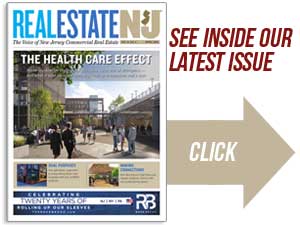By Joshua Burd
The Rutgers Center for Real Estate has launched a study that it hopes will capture real-time data on parking usage at residential properties in New Jersey, as it pushes for updates to the decades-old standards that towns and cities use to guide land use and redevelopment.
In a survey sent to owners, operators and others involved with multifamily properties, the center is soliciting responses to questions such as the number of off-street parking spaces provided and utilized, whether it’s shared with other uses and whether the community offers shuttle service to mass transit, among others. Organizers hope to analyze that data alongside details such as the size and style of the building, its unit mix and its proximity to mass transit, with the goal of providing the information to state policymakers and regulators.
“Parking is an integral variable in any redevelopment for housing, and if we’re going to come up with solutions and ways to deliver more affordable housing and more product into the market, we have to address this variable,” said Debra Tantleff, a member of the Center for Real Estate’s executive committee. “The only way to do that is to bring an objective academic institution to the table to help assemble and aggregate this data, analyze it and let it show what it shows.”
Tantleff, the founding principal of Jersey City-based TANTUM Real Estate, said debates over parking ratios can often derail redevelopment projects when a governing body is unwilling to deviate from state guidelines that many see as outdated or far too generalized. Structured parking is among the biggest expenses in a development, she said, meaning it has a significant bearing on building costs and what renters will ultimately have to pay.
The Rutgers survey consists of 19 questions that highlight not only a property’s parking usage, but its location and product type. Doing so will help the center distinguish between a midrise apartment building near a train station and a for-sale townhome in the suburbs, while also considering occupancy rates, rents and the availability of essential services nearby.
Tantleff and others say it’s critical to draw those distinctions as the industry advocates for updating the state requirements, known as Residential Site Improvement Standards, and seeks to provide municipalities with more flexibility.
“Parking standards under the Residential Site Improvement Standards are rigidly applied and based on decades-old data when our outlook envisioned a more highway-centric, suburban future,” said Jeff Kolakowski, CEO of the New Jersey Builders Association. “Land use, development patterns and New Jerseyans’ behaviors have changed drastically since these standards were adopted, and it’s time we modernize and get away from our one-size-fits-all approach.”
Assemblyman Clinton Calabrese, who represents parts of Bergen and Passaic counties, hopes to address parking standards under a bill introduced late last year. The measure, A4984, calls for reducing on- and off-street parking spaces in the statewide site improvement standards, depending on a residential development’s proximity to certain public transportation services.
“We have to start evolving with the times,” said Calabrese, a former member of Cliffside Park’s zoning board and a principal with Alkova Cos., a development firm.
The issue is also a longtime focus of NJBA, of which Tantleff is a board officer and which was among several organizations to receive the survey.
“Parking needs vary significantly across our communities and we are happy that Rutgers is undertaking this important study to collect a board range of information that will be valuable to state policymakers as they look toward reforming policies that only stifle housing production throughout New Jersey,” Kolakowski said. “There are a host of factors creating land constraints on future housing communities and we should not exacerbate the problem by requiring unutilized impervious cover. Taking a closer look at this makes sense from both a planning and environmental perspective.”
Tantleff said the Center for Real Estate hopes to replicate the success of its last survey and white paper, which helped quantify the number of school-age children living at new, higher-density apartment buildings in the state. The study of more than 40,000 residential units in New Jersey found that the number of children living in such properties is closely tied to renter household incomes, the number of bedrooms and a property’s age, density and location, helping to demystify a topic that developers and local officials have long debated.
“We learned we needed a high level of volume of data, and we learned that an academic institution … was the appropriate conduit to release that data, because it’s being received and accepted by both sides of the table, if you will,” Tantleff said. “Municipal planners are using it. Both the public and private sector are relying on and analyzing that data.”










